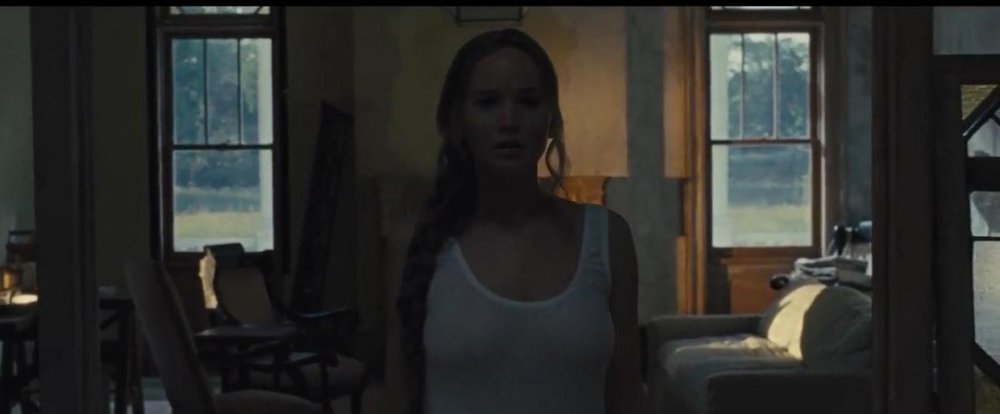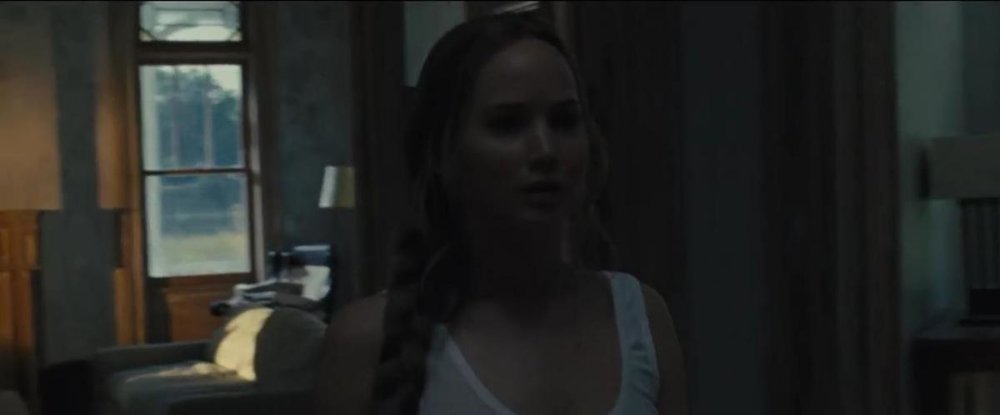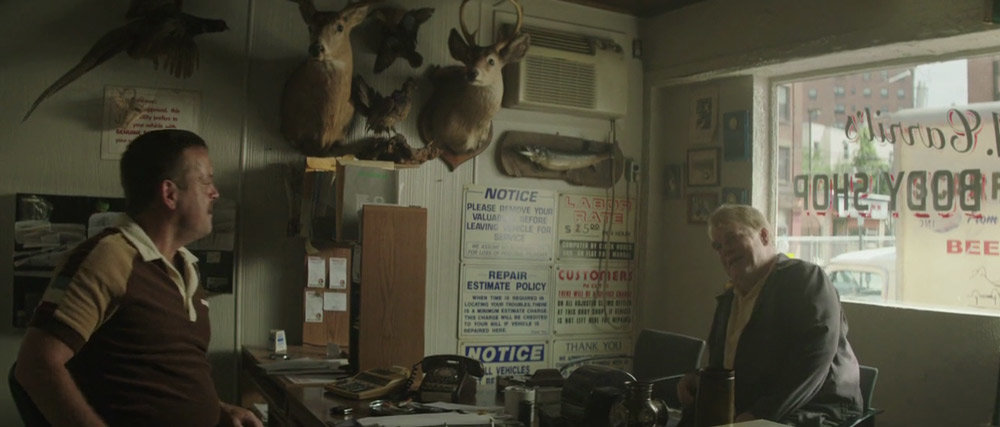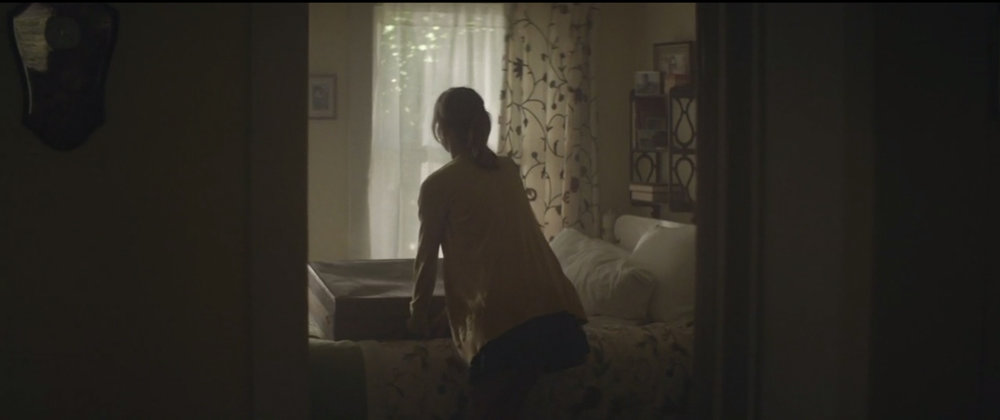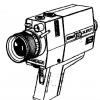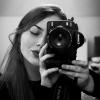Search the Community
Showing results for tags 'Exposure'.
-
Hi All! As a student, each projects means a way to stretch myself further. If I'm not trying something new (or a little bit scared) on a project then I feel like I'm not taking steps forward. Lately I've been doing pretty in-depth floor plans and 2D pre-vis, and it has been working wonders for every project. However, I'm still working to get exactly what I want in my head to paper, so that on set my images are not a surprise. Is there a way I can tell how many foot-candles a certain light will output? I'm wanting to essentially know exactly how powerful a light I'll need to expose to a pre-determined f-stop. I'm familiarizing myself with inverse square law, so all I'd need is an output at any one distance and could work from there. Is this just a knowledge gained from experience? Or is there a practical way to determine output? Thanks, Jake Mitchell
- 8 replies
-
- exposure
- preproduction
-
(and 6 more)
Tagged with:
-
I recently bought a Canon Scoopic M and the exposure meter doesn't work. I've fixed some other issues with the camera already so I want to try to fix it myself. Has anyone any experience with fixing this and could help me out with some guidance? I also downloaded the repair guide so if that's any help to find there, please use it as a reference. Thanks in advance.
- 1 reply
-
- scoopic 16
- fix
-
(and 1 more)
Tagged with:
-
Hey, I was reading through Kodak's 'The Essential Reference Guide for Filmmakers' and came across the following: A word about film speeds You probably know that motion picture films use exposure index (EI) to indicate speed. Although similar, EI is not the same as the ASA or ISO speed used for still films. EI denotes a somewhat conservative figure related to the higher quality requirements of motion picture film that must be projected onto a large screen. Typically the EI speed is about one stop lower than ASA or ISO. EI 500 film, therefore, is the equivalent of ASA/ISO 1000. Is anyone able to develop further on this? It is the first time I've come across the concept that EI is not the same as ISO. If I take what is written literally, does this mean that I should be setting my light meter to read at 500 instead of 250 (assuming I am shooting on say 250D stock) to get correct exposure? All the best, Connor
- 13 replies
-
- Kodak
- Exposure Index
-
(and 3 more)
Tagged with:
-
Hello guys, I have a very stupid question, haha. I will have a interview shoot next week, and it will be my first time working with projector. So I have some question regarding working with projector, fist of all, would I be able to use projector as my KEY light? Second of all, what should I be aware of working with projector? (I am worry about the flicker) Third of all, I do not know if I could use projector as my FILL light and have my own lighting unit play as KEY light? Guys please share with me some of your experience working with projector!! Thank you so much for taking time read my stupid questions, really need some help!
-
- projector
- cinematography
-
(and 1 more)
Tagged with:
-
Hello, When you are metering a scene, do you meter for the camera's dynamic range, or for the 6 stops in SDR or the 13+ stops in HDR? For instance, if your camera has 6 stops of highlight dynamic range, and 8 stops of shadow dynamic range, do you keep everything in your scene between those 14 stops or do you keep everything in between the lets say 6 stops of standard dynamic range? I hope this question makes sense! Thanks in advanced to anyone who can help! - Matt
-
I recently purchased a Nizo 481 Super 8 camera and the motor runs fine, but the needle that indicates exposure does not appear. The batteries for the camera itself and the light meter are both new. I did run a battery test by moving the master switch from the black '0' forward to the black dot, and the needle will only appear then. I'm probably doing something basic wrong, but would really appreciate any guidance. Thank you!
-
Hi all, I was wondering how one would go about exposing or even using color effect filters like color gradients, Coral, Antique Suede or Day for Night optical filters while shooting on a digital camera and delivering in color. For example, say that you are using an Antique Suede. Wouldn't depriving the sensor of blue light be very destructive to the raw image? To my understanding the blue channel displays the most noticeable noise the most often. If so, how would you combat this? What are the advantages of doing such an important color decision in camera rather than in post apart from the "stops people from messing with your image" argument? Are there any clear optical or overall quality differences? Thanks in advance!
-
Hi group, Well I was always wondering: Why don't lenses provide the F stop which exactly corresponds to the light actually hitting the film emulsion or sensor (not accounting for lens flare and other random factors, just the glass inside the lens)? So in reality: if I get an F stop value from, say, a light meter, I most likely will get it in T stop. Otherwise the "exposure triangle" would make no sense (to me that is). Looks like some lenses are reducing as much as one stop while others perhaps a third of a stop. There is some information for some lenses regarding the actual T-stop, but many don't come with that information - and even with that information: what to do? Now add certain filters and you're into some serious math.... The only thing that remains the same (F stop/T stop) is of course the depth-of-field/focus. Fully automatic digital cameras with 100% matching lenses (or built-in ones) most likely take all that into account (to varying degrees of success IMHO). But what about using different lenses with no electronics and a 100% manual exposure? With film, once it's in the camera (and you don't have a variable shutter angle) your only way(s) to control exposure is/are lighting, filters and F stop. Please let me know how you go about the F stop vs. T stop issue and avoid under exposure. As always: any reply highly appreciated. Christian
-
I'm about to start a feature and because of our schedule as well as dropping temperatures, the possibility of shooting day for night is becoming more and more real. My concern is that having red/orange light in the night scenes is extremely important to the director, but that the grade will suck all of that out. The source for the light is a campfire, but one of the characters will also be bloody and wearing a faded red jacket. I've seen the 40's/50's day for night scenes which have a lighter grade and thus more colors, but those seem to have been done because of the sheer expanse of the locations that needed to be seen. Cast Away is the best example of fire/red light I can find for day for night, however I have read that there were some VFX in those shots. While we do have access to a good VFX house, I want to be able to introduce red light practically as a baseline. One detail, we'll be shooting in the woods in California so I'll have limited generator power due to fire concerns. So essentially I am at a loss. Any advice is deeply appreciated.
- 12 replies
-
- day for night
- lighting
-
(and 3 more)
Tagged with:
-
Hi everyone. I'm pretty new to shooting on film. I recently bagged myself a Yashica Super-60E and want to produce some footage on it. I need some exposure advice. Now, if my knowledge of exposing non-digital wasn't limited enough, this camera is auto-exposure. It has three "brightness control" settings (Spotlight, Normal & Backlight), which the manual claims can push the camera around one-stop in either direction. There's an in-view meter, which will roll to red if under-exposed, or otherwise will usually sit somewhere between f4 and f2.8 levels. The manual also claims that it's impossible to over-expose... could that be true? So - now assume you're talking to an idiot (you are) - what tips and advice can you fine people offer to get the best exposure results from my footage? Thanks a lot in advance for any input and your patience with a novice.
- 4 replies
-
- Yashica S60E
- auto-exposure
-
(and 1 more)
Tagged with:
-
Shooting Red Epic for the first time. Longtime Arri - Sony User any exposure/ Gamma tips tricks?
-
There has to be a correlation right? Lets say I shoot a 18% gray card and it is sitting at 50 IRE on a waveform monitor. What would an increase of 1 stop read? A decrease of 1 stop? I'm trying to create some customized false color LUTs just for my own purposes to analyze images in resolve. But I'd like to be able to say ok, gray = middle gray, one stop over that should be yellow, two stops over that should be orange, three stops over that should be red, etc. but I'm struggling with knowing how to measure the exposure gains. Thanks!
-
Dear Cinematographers, Been carrying around two 100 ft. rolls of 16mm 500T film for the last year. It has been in a 10˚-20˚ cooler for six months. Someone told me freezing negative film would cause the remjet to stick, so I then refrigerated it in about 40˚ for six months. Now that I am ready to shoot it, the question presents itself: How am I to expose it in order to compensate for the yearlong stagnation? That is, if it not already too late. Sincerely Grateful, Kurt Cassidy-Gabhart
-
Hi there, I have a film coming up which sits in the suspense drama genres with a touch of comedy. The director has put forward a number of Coen brother films like Serious Man and Fargo as narrative references. Anyway, long story short we have quite a bit of the film that plays out in a house up on top of a mountain. I am really keen to bring the scripts drama out by playing with contrast but I really want to retain my high lights and my black level so I have detail in them. Looking at Harris Savides mainly, Lance Acord and Matthew Libatique in Mother! They really nail this dramatic look. Please check the references I added from Mother! and God’s Pocket. Looking at the references I would like to know what your preferred why or technique is to control the int exposure with ext spaces in the shot. I can see in Mother! the windows are looking out onto trees which are some what darker which helps the contrast. There are options with the ext. but I am curious to hear about techniques where I can increase the ambient light in the house without it looking like I have lit it. I am shooting Arriraw on Alexa Mini with Baltar lenses. It’s my first film shooting Arriraw so I have not tested this extensively. Kind regards, Jacques
-
What is the downside to using an incident light meter to set my exposure for video? I've been doing it for about a month and it has been working well for me so far; but I'm a rookie—those of you with much more experience—what can go wrong in video when measuring light with an incident meter rather than using the various camera exposure tools? I'm mainly concerned with ensuring that faces look the same from shot to shot. The problem I'm trying to solve is that my style generally includes a fair bit of back and edge lighting which often freaks out the waveform monitor, the RGB parade, and the histogram so I have been getting inconsistent brightness levels. Using a light meter is also quicker because I can adjust lights and get a reading immediately rather than running back and forth to the monitor to see what has changed.
-
Looking for some exposure help when shooting moody scenes with the FS5 - I have seen a lot of people recommending setting the zebra to 70 percent ( which makes things pretty bright on the monitor for a darker scene/ is this something people only do in LOG? ) are there any other usable on camera exposure tool other than zebra?. Don't use Sony's much and am more used to Using a REC 709 LUT or false colors within my ALEXA eyepiece to expose. Also, should I be switching from LOG3 to cine gamma for lower light situations? Also any general tips for exposing low light scenes without crushing the blacks?
-
Hello I recently picked up a Canon 814 XL and I have many questions about film speed and manual exposure. To start, Most of the time I'm going to be using Kodak film stock. 50D 200T 500T I understand these are ASA speeds correct? I read my cameras manual and i noticed that it does not read any of these film speeds. Artificial - 25 40 64 100 160 250 400 Daylight - 16 25 40 64 100 160 250 My question is, What will my camera read it as then? What does this mean for my auto exposure and manual exposure? I've read some things in these forums about over exposing manually or underexposing, if thats the case, how do i go about doing that? If someone could explain f-stops to me, or refer me to a video or something that would be great! I've seen a few videos on the subject but I'm still a little confused how f-stops and film speed coincide, and how to underexpose and overexpose, things like that. Another question. I've read about a notch hack that you can do to the Tungsten stocks to disable the filter. My question is, Why would you want to do a notch hack on a Tungsten stock when the internal filter corrects it for you?
-
Hi everyone, I just wanted to get a few perspectives on grey cards. I currently own a cheap Neewer card that has worked fine for my purposes so far, but I've always wondered how accurate it is. Because I intend to test some film stocks soon, I want to find one that I know is perfect. I've been thinking about getting the Kodak R-27 card, but the price tag of $27 for a piece of cardboard has made me hesitant to do so. I can't help but think that if I'm going to pay money for a reference like this, maybe I should look at other options as well. Does anyone have any grey card recommendations as well as advice on using one? Thanks.
-
I recently purchased the expired Kodak Film Stock listed below and would like any suggestions on the best F-Stops for exposure. I plan to telecine to 1080p or 2K. Will be using a K-3 16mm camera. 7246-250D 7274-200T 7279-500T 7289-800T 7298-500T Thanks Nate
-
So I have shot my first test roll of super 8 film. The stock was Kodak TRI X revisal film. For most shots I used the auto exposure, then exposed manually with the goal of slightly over exposing. It seems to have come out well although most of my manually exposed shots seem over exposed. Additionally, some of the auto exposed shots lack detail in the highlights. The manual lists it as being able to read the following speeds and I noticed that they don't really line up with current film stocks. Tungsten: ASAs 25, 40, 64, 100, 160, 250, 400 Daylight: ASAs 16, 25, 40, 64, 100, 160, 200 Do I need to compensate for what the meter is telling me when using an ASA not listed in the manual? My main question is based on the test roll is my meter working properly or not? Link for test roll: Note i did a standard def scan since this was a test roll. On another note: I will be going on a trip to Baja and am planning on shooting super 8 while I am there. The goal is to shoot some surfing along with generally adventuring and sightseeing. Given the bright sunlight should I just go with Kodak 50D film stock or get a mix of 50D and 200T for versatility? Thanks Chris
-
Hi everyone, first post here. Glad to be in a forum like this. I have a project due in a few days (Super 8 B&W reversal roll 200T) and my camera (Nikon Super Zoom 8) isn't showing what the automatic exposure is. I'm sure it works, it's just the dial isn't moving in any direction when I check for the exposure (it's stationary between stop 2 and 4). I really need to do this project, but it really is too late to rent a camera tomorrow. What do I do? Can I ballpark the exposure? More or less what would the exposure be (outdoors) from bright light to under the shade of a tree to dusk? Just need at least something to show up.
-
hi , I wonder if the false color effected by the view mode. the false color will change when view mode from ITU790 to logc or raw ? false color in redone is diffrent to in alexa ? thanks!
-
Hi, I'm a photography student and I recently bought a Canon 1014E. I mainly shoot 35mm photos (I can work a film camera easy for stills) but I wanted to get into film making so I decided to start out with Super 8 because I assumed it would be pretty easy because of the role it used to play in home video making. I guess I was wrong! I've read the manual online a ton of times but all its done is confuse the hell out of me. I'm up to speed with the majority of the camera's functions but some of them still baffle me so I would appreciate some help! Being a student I have hardly any money so there's not a lot of room for error. This photo came from a previous post (so please ignore the arrows)!! I have 2 main queries regarding operating the camera and I expect that they'll sound incredibly stupid to someone with experience but I am COMPLETELY new at super 8 so I have no idea - Please forgive me! here is a link to the manual for reference - http://www.manualslib.com/products/Canon-Autozoom-Electronic-1014-3015685.html 1. The film i have is Vision 3 50d but the camera's automatic system does not recognise this. This problem has been answered here: http://www.cinematography.com/index.php?showtopic=61842 however I am not sure about what it means to over exposing by a 3rd of a stop. In more basic terms, how can I shoot on my 50D so that is not over exposed? 2. When I look in the viewfinder and the camera is in full automatic mode there is a meter with an aperture scale at the top., and red at both ends. Is this the light meter (ie when the needle is over to the right it is over exposed, left under exposed etc?)? Or does this simply show me what the auto aperture is for a correct exposure, meaning that even when it is far to the right but not in the red it is still a mid range, correct exposure? I usually shoot with a Canon AE-1 within my photography and its meter is very different, hence why i'm confused. 3. I feel so silly even asking this question (it pains me so hard as a photographer) but in auto mode in cloudy daylight the needle on the meter inside the viewfinder is ALWAYS in the red as far as possible on the right side of the spectrum. How can I change the exposure without making everything too technical? I understand that the switch with the dot, 2 and 4 next to the FPS have something to do with exposure however the manual conveyed this section in a way that was very confusing to me. How do I correct the exposure? If anybody could help i'd be so grateful! I've been waiting to get my hands on this for ages so i'm eager to get shooting ASAP. Thank you so much!
- 7 replies
-
- canon 1014e
- super 8
- (and 4 more)
-
I was reading the Oscillating the ISO on Alexa thread yesterday and in it David says so I was wondering is there an easy way do to a calculation of this sort on the spot without any aid from a gadget or an exposure calculator: What is the difference in exposure between ƒ/4.5, 24 fps, ISO 640 and ƒ/2.8, 60 fps, ISO 800?
-
Hi all, Just a question: WeIl I still have three unopened 100ft rolls of 16mm Kodak Ektachrome 100D in my freezer. Love that film stock! Got it still at reasonable prices a few months back. One is © 2001 and two are © 2009. No exp. date. I'm planning on using one roll (the 2009 stock) for shooting our band during sound check on stage, run and gun style (outside, sunlight - very likely the weather will be clear skies). The film stock seems to have been stored properly. Still: my Q: should I compensate for film speed (sensitivity) loss? If it was neg, I'd simply rate the 2009 stock about 70-80ASA and the 2001 stock about 50 or even lower. Kind of afraid to blow my highlights, since it is reversal, but underexposed it would look very grainy (at the moment I only can afford a 2K scan with the Muller HD at Gauge Film, UK. They always do a really great job, maintaining the grain structure and look, but compensating in post for wrong exposure only goes so far). The footage will be Super 16mm and meant to be used for 1080p uploads (YouTube, Vimeo). Any tips highly appreciated! Thanks! Cheers, Christian
- 21 replies
-
- Ektachrome 100D
- 16mm
-
(and 2 more)
Tagged with:




